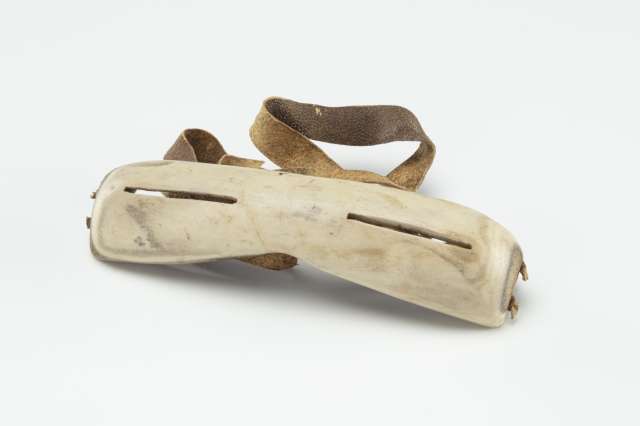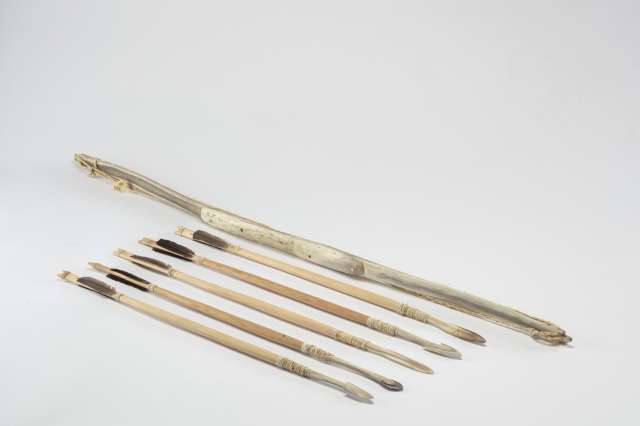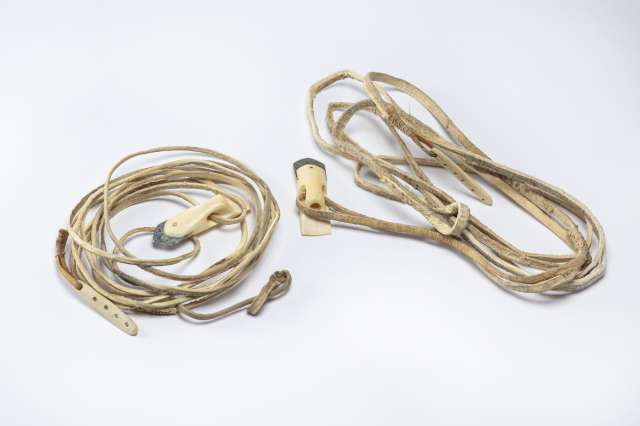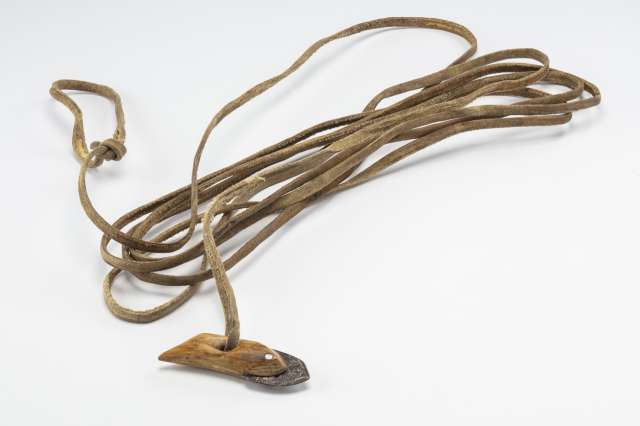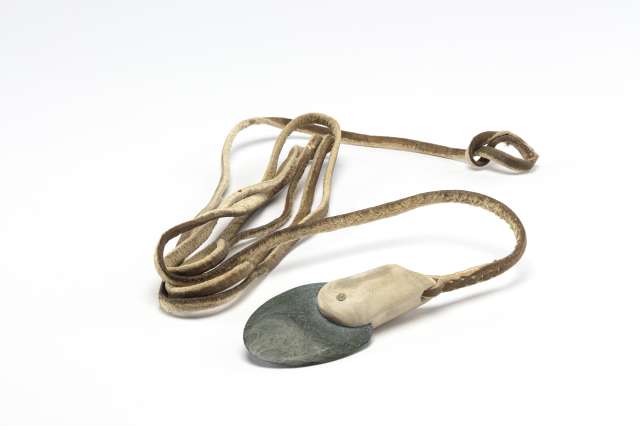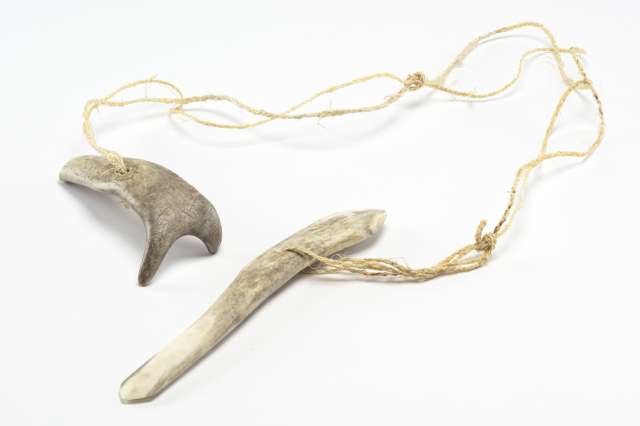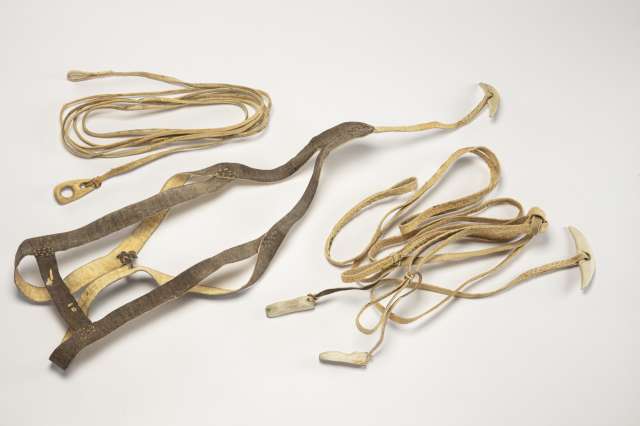Gear for seal hunting
This kit was used to hunt seals at an aglu, their breathing hole in the ice.
Tool
A hunter would spend long hours next to an aglu, using this tool composed of two antler pieces held together by a leather strap. The sharp tip of each antler piece was driven vertically into the snow, and the other end, slightly notched, supported the harpoon. The leather strap could be used to drag the dead seal away, with the dragging being done by either the hunter himself or his dog team. There was no consensus among elder respondents on how this tool was used, since it has not been used for generations.
Pouch
The caribou-skin pouch contains three ivory pins and a bone needle, which were used to close the seal's wounds and prevent blood loss until the hunter was back at the camp. In winter, the pins (putuqikuti, singular noun) were used to close the wounds, and they froze in place. In summer, the needle (miqquti) was used to stitch the wounds with sinew thread. Nowadays, Igloolik hunters usually cut up the seal after capturing it. Its blood is no longer kept for consumption.



